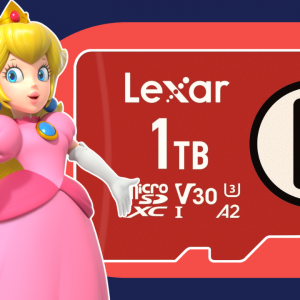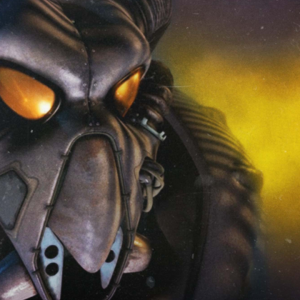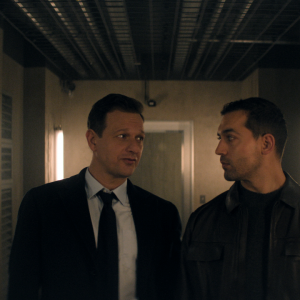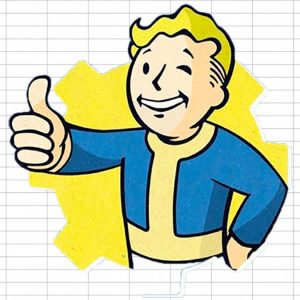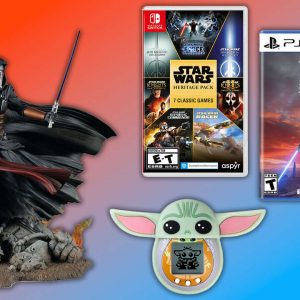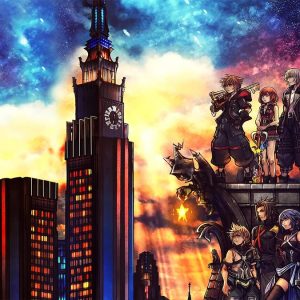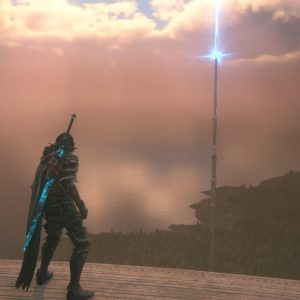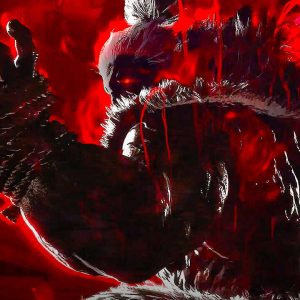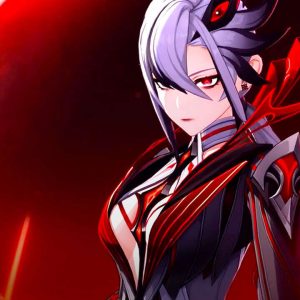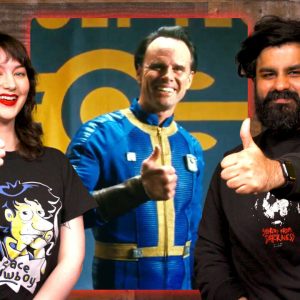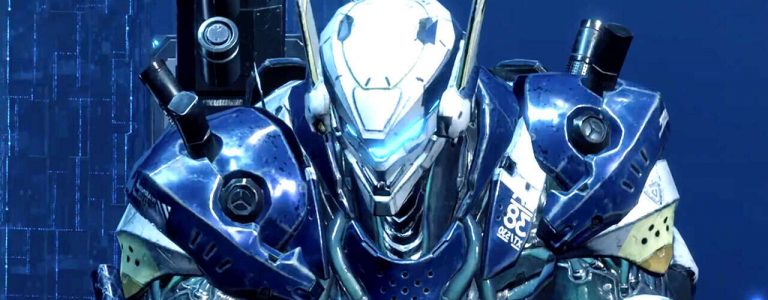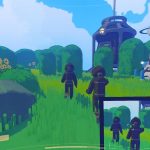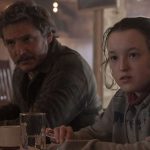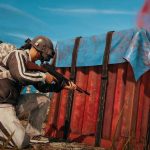At IGN Summer of Gaming, we were able to sit down with Starfield director Todd Howard for an exclusive interview about the upcoming Bethesda RPG.
After years of rumors, teases, speculation, and a high-profile delay, Bethesda is finally ready to launch Starfield into the stratosphere on September 6, 2023. Howard visited IGN and Ryan McCaffrey after the Xbox Showcase and Starfield Direct to go in-depth on what was announced and to try and explain the sheer breadth of all that was revealed during the show.
During the interview he discussed its delay, its performance on Xbox, the surprising influence of Red Dead Redemption 2, and much more.
“[W]e have put so much into this game, and it is, as you said, our first new IP in over 25 years,” Howard said. “It’s our first major release in about eight years. So for us, we have just put so much into it that we’re just doing everything we can to make the best game that we can. Hope that everybody loves it.
Howard’s follows the big Starfield Direct that took place over the weekend, which you can read all about right here. Read on for for full Summer of Gaming interview with Bethesda’s Todd Howard!
IGN: This is the first new IP you’ve done in a couple of decades now. It’s been a little while. So totally new thing. It’s the biggest exclusive for Microsoft in a long time, and it’s certainly the biggest thing Microsoft’s put out since they acquired Bethesda. So… [there’s] pressure. In all seriousness, do you kind of feel any extra pressure compared to any of the other games you’ve made, or you kind of focus on what you do? I’m just sort of curious if the stuff that we talk about in the gaming community is something that goes through your head or gets talked about in the office at all.
Todd Howard, Director: Well, clearly, I’m aware of that, everything you said. And compared to our previous games, there’s always a lot of attention on what we do. We’re very fortunate. But for us, we have put so much into this game, and it is, as you said, our first new IP in over 25 years. It’s our first major release in about eight years. So for us, we have just put so much into it that we’re just doing everything we can to make the best game that we can. Hope that everybody loves it.
So we feel we’re on the right track and we’re really fortunate, I think, with some of those things you said, to get the attention. And we know there’s a lot of people out there looking forward to it, and we just view our jobs as, hey, just do the best job we can do, put everything we can into the game, and hope everyone loves it.
I think the last time we talked, or maybe the time before, I gave you a little grief for… You Babe Ruth’d and you called your shot with 11/11/22 really far in advance.
TH: I did.
And I think we were having a little fun about that before the delay. I mean, it’s good. We want a better game. We don’t want you to just make the date just for the sake of making the date. So just out of curiosity, how has the extra time been spent specifically with Starfield?
TH: Well, look, it’s just such a big game. And as you do these things, look, you do your best as it comes to release dates and projections, but given the scale of it, if one thing is off by a percentage, that can escalate quickly to more time. And we’ve really spent most of this year, playing the game a ton over and over and making sure that it’s balanced, it’s as fun as possible, honing systems and interface. Obviously, bug fixing and all of those things, performance, and really getting it where we’re really, really sure and solid on what we’re putting out there for everybody.
Well, speaking of performance, Xbox gamers went through a little unpleasant surprise with the last big Bethesda exclusive not too long ago with Redfall and that maybe not performing on console on the Series X kind of how we’d hoped. So I think really all we’re looking for is not necessarily everything’s got to be 4K 60 or 120 frames, but just kind of nobody likes surprises when it comes to the game that they’re going to buy, how it performs, how it feels.
Now, your games have always been these just boundary-pushing, envelope-pushing, huge, open, detailed worlds. They’ve been 30 frames per second on console traditionally. So just I’m going to turn it over for a second here. Just lay out just so that nobody is surprised come September 6th. What are we looking at on… If I’m going to play this on a Series X, or even if you want to mention Series S as well, what’s the experience going to be, technically speaking?
TH: Yeah, I’m glad you asked. I think it’ll come as no surprise, given our previous games, what we go for. Always these huge, open worlds, fully dynamic, hyperdetail where anything can happen. And we do want to do that. It’s 4K in the X. It’s 1440 on the S.
We do lock it at 30 [FPS], because we want that fidelity, we want all that stuff. We don’t want to sacrifice any of it. Fortunately in this one, we’ve got it running great. It’s often running way above that. Sometimes it’s 60. But on the consoles, we do lock it because we prefer the consistency. Right? Where you’re not even thinking about it. And we don’t ever want to sacrifice that experience that makes our games feel really, really special. So feels great. We’re really happy with how it feels even in the heat of battle. And we need that headroom because in our games, really anything can happen.
“
Speaking of tweaking and optimizing, there were some rumors going around that id Software was helping you guys out with the combat, with tuning combat. I’m just curious, was there any truth to that at all?
TH: They did not help us with the combat. Well, first of all, I’d say being in the company, knowing the folks at id Software for a long time, I’m a huge Doom fan.
Yeah. I mean, they know what they’re doing. That’s why I ask, because not that you know, but-
TH: They’re the absolute best.
They’re awesome.
TH: DOOM Eternal is one of my favorite games. So with Fallout 4, they did give us a few tips on how to handle combat. And Starfield, we redid the combat ourselves and it’s really feeling great. But id has helped us really more on the graphic. They’ve helped us on the graphic side.
Nice.
TH: So we get into motion blur. It’s just how the game feels smooth. Some other things that they do in id Tech that we wanted to bring over into Creation Engine 2, and they helped us do that, and it’s great.
Awesome. Yeah, it’s a nice neighbor to have down the street that you can go knock on the door and ask for some milk and sugar, right?
TH: And I’m such a fan of what they do. So being able to get an early look at what they’re doing next… Not here to talk about that, but it’s just…
I mean, feel free to talk about that.
TH: Yeah, no, no.
I mean, if you want.
TH: No.
All right, so I’m curious, given you mentioned that it’s going to be just shy of eight years between shipping Fallout 4 and shipping Starfield, which to my knowledge is the longest that you’ve ever gone between shipping games that you’ve directed-
TH: That I’ve directed. Yes. Well, obviously, we had [Fallout] 76 in between, but it’s something that I’ve directed, yes. That is a long time.
So I’m just curious about what was your initial vision for Starfield and how that’s either stayed true and born out or evolved over the course of eight years.
TH: That’s a great question. I will say this, that the game sticks to the original vision that took longer than I wanted. But I’d say about halfway through the project, you realize this is why nobody tries to make this game.
So it’s been… When you do these things and you take some risks and you’re really ambitious, that can be a very windy path sometimes is how I’d say it. But it is true to the vision we had for our type of role-playing game set in space and where your mind kind of goes. And we want to, as much as possible, say yes to the player. Can I do this? Can I do this? Yes, yes, yes, yes, yes. And space is big. So the amount of content that we ended up making to have that really feel authentic to that, that that did grow and grow from where we originally started.
I mean, so neither one of us is getting younger. We’ve both been doing our respective things for a while.
TH: That’s true, yeah.
So are you okay with things taking eight years again in the future, or…
TH: Not my plan. I don’t think you would ever, ever plan for that. Sometimes that’s how it ends up, so that you know that what you’re putting on the screen is what you want. But you’re right, I’m not getting younger. You sort of start…
Like how many games do you have left in you?
TH: Yeah, how many games are ahead of me versus behind me. So that does start to enter your head.
Would you point to any other games as inspiration for Starfield along the way? I mean, not in the literal sense of, “I want to do what they did,” but in terms of giving the player a feeling that something that… A game you played that you really wanted to convey. I mean, when you first showed me this game a while back, I mean, I certainly was reminded of Elder Scrolls and Fallout to… I mean, the DNA is there, but the other, I would say, two non-Bethesda games that I got little vibes from were No Man’s Sky and Mass Effect.
TH: Well, clearly, those other games that are science fiction, I think you might look at and say, “Okay, this is science fiction. It’s like that.” I think the minute to minute, obviously on the ground, it has similarities to Elder Scrolls and Fallout and the things that we’ve made and how it feels in your hands or some certain mechanics.
But believe it or not, it’s the games that put you in a world, that transport you to a place. So I think it also as a flow, probably has more of a feeling of a [Red Dead Redemption 2], right? Like I’m living the Western fantasy. So in this, you’re living this science fiction explorer fantasy, and sometimes that’s being on a barren planet and nothing is going on.
“
Or an Old West town. We saw that in the direct, kind of Old West inspired.
TH: Right. And all of that. So for me, it’s games that where I feel I am rooted in the reality of this universe of the game, and everything else kind of disappears.
I mean, as people have now seen, there was a lot in the direct, in the 45 minutes that were covered. A big takeaway for me was that for everything we saw, there was just sort of these hints of Constellation, and that seems to be who the main story is going to revolve around. But separate from that, or kind of, I guess, adjacent to that, it seems like there’s so much to do in this game that are you going to be okay if players just don’t end up really necessarily even paying much attention to the main story and just end up kind of doing their own thing out there? Or are you taking kind of greater pains to make sure that people want to stay and get through that main path before they get back out to the wild space frontier?
TH: It’s a good question. I view our job as giving people the menu. Here are the things you can do. It’s a very large game. Obviously, there’s a lot to it. It can be complicated at times. And we have found though that the gaming audience, in particular our fans, they want to have all those options. And I do think more than anything we’ve done, I really believe this, that the more you give to Starfield, the more it gives back to you. That was one of our goals. So I do hope people play the main quest, and I hope people do this, but most of all, I want them ultimately to do whatever they want to do.
Yeah. I mean, I know you don’t want to give away a lot about the main storyline, certainly, and people don’t want to have that spoiled for them, but what I would be curious of, given, again, the scale and scope of this that the direct conveyed and that I barely scratched the surface of when I was playing a little while ago, of these thousand planets, of all this stuff you’ve got going on, how much of it will the main story lead you towards? You know what I mean? Because you probably want to show as much of the diversity and as many of the cool places that your team worked really hard on over the course of the campaign, but you can’t show everything. You can’t lead them up to a thousand different planets, right?
TH: We want to keep it sort of manageable. That’s what I would say in the main quest. So obviously, we hit some high points, but not even… It’s still a small fraction, like you’re saying, to what’s in the game. And for us like a main quest, we want it to sort of pay off. There are people that do want to come to a game, do the main story, and feel that, “Okay, I’ve won. I can now do something else.” I think that’s okay too. But we’ve also learned, look, we’re sitting here, it’s 12 years after Skyrim. We’re looking at a game that has over 60 million copies and all these people playing it, and they’re still playing it. So we have learned we need to build in, from the beginning, a game that has this long-term play thought of so that hopefully, people are playing Starfield a long time from now.
Well, on that note, you guys have always done post-release content. If you’ve had major paid, bigger expansions, you’ve had smaller scale stuff, I can’t imagine that you’d even want to necessarily expand this game geographically moving forward, because there’s already a ton there. So I know you’re not here to just announce your post-release plan, but conceptually, how are you thinking about it, given that this is a giant universe rather than just a continent like in Cyrodiil in an Elder Scrolls game?
TH: Right. It’s a great question. I mean, look, we’re going to be doing a lot of add-on content for Starfield. We love doing it. Our fans love it. We will have announced sort of the first one that’s going to… We’re going to do a story expansion pack that’s going to be coming. Our plan is to do things of varying sizes, and we’ve done a lot of that in our previous games, so it’s something that we really like doing, our fans like. So despite the size of the game, there’s still things we want to add as far as features in the future or stories and things like that. So we think this is going to game. Hopefully it’s going to continue for a long time that way.
At the end of the Starfield Direct, we heard from a bunch of folks on your team about their favorite moments that they’ve had while playing. Can you paint me a specific picture of a memorable moment for a character that you’ve rolled, that you’ve been playing in recent months? Some just memorably cool scenario.
TH: Let’s see. Just a few weeks ago, I had landed on one of the early planets and this sandstorm blew through and I went to run away from it. And ships can randomly… Once in a while, they can randomly land. Enemy ships can land. So I’m going through the sandstorm, the ship landed and I get in this firefight and I got on the ship. And while I’m shooting the guys on the surface of the planet in the ship, the ship took off into space. So now I’m in outer space on the ship, and I was just like, “Can that happen? I guess that can happen.” Yeah.
One of my favorite moments from Oblivion, which I’ve told you many times is my favorite game of yours. That’s the one that I have the most positive memories with was randomly finding a unicorn in the forest.
TH: That was very… Yes, you can do that there.
So are there like 50 of those kinds of things in this game-
TH: There’s a good number. There’s a lot.
… where there’s just stuff that’s not a quest, that’s not… You’ll just randomly happen upon this memorable, special day?
TH: I don’t want to spoil what they are, but yeah, of course. We love that stuff. And we have some really, really special ones in this game that I think… I’m very curious to see how long after the game is out that people discover it.
Yeah. Now, you mentioned Skyrim and tens and tens of millions of copies of that and the sort of historic runaway train that thing’s been. I mean, you probably can’t count on that level of success-
TH: No.
… again, necessarily.
TH: No.
So what does success look like for you with this game?
TH: That’s a good question, because with Game Pass, we’re obviously going to be bringing in probably the biggest audience that we’ve had for a launch. So that just makes you really fortunate to know that you can take these kind of risks with a game like this and be ambitious, but still know that it’s going to get in a lot of people’s hands.
So I mean, I think for us, it is that people say they love the game. And I think all games go through a couple phases. Like they have this phase where the game isn’t out yet. What do people think of it? And there’s like, “What do they think of it the first week it comes out?” But then you’ve got to think about what do they think after a year. What do they think after year two? So I hope that it sort of stands the test of time, like our other games. I don’t focus on the number of users in that way.
But I guess you can’t really design for a game that will stand the test of time, right? You just have to do your best and hope that it works out.
TH: That is very good. You do the absolute best that you can do. Again, the whole team is just… We have really poured ourselves in this one over a lot of years, and you cross your fingers, you do everything you can. There are systems you can design that say, “Hey, look, this system is going to work over a long term play with hundreds of hours,” like a character system versus, yeah, after 30, you’ve burned through everything. That’s certainly not the case here.
It’s clearly not, based on what I’ve seen so far. The thousand planets number is the big one that you’ve been throwing out. What’s the ratio of the procedurally generated stuff to the handcrafted stuff?
TH: Well, the planets themselves, the landscape’s pretty much all procedural. We kind of make these large… Think like kilometer-sized tiles we’ve generated. And those get kind of wrapped around the planet. As far as handcrafted content, more than any game we’ve done. I’ve stopped giving out numbers, but just in the dialogue, it’s more than our last. It’s more than Skyrim and Fallout 4 combined just in dialogue, right? So as we get into locations and art and everything, we’ve done more of it than we’ve ever done.
“
Wow. Is it reasonable to suggest that if Starfield is as awesome and successful as we all hope it is, that as gamers, is it reasonable to think that a Starfield 2 is 10 plus years away? And the reason I bring this up, not to bring it back to how much time do we all have left, but you have always kept…
TH: Is this going to get depressing?
No, I hope not.
TH: Okay.
But you’ve always kept your team, clearly on purpose, as one team. Bethesda Game Studios, your team. And you had been alternating between Elder Scrolls and then once you acquired it, Fallout, and you’d gone back and forth. And now you’ve had this eight year Starfield thing in here. You’ve already committed to Elder Scrolls VI as the next thing. You’ve said it’s in pre-production. And then last year when we talked, you said, “Yeah, Fallout 5, I want to do that. That’ll be next.”
TH: That was more of a general… It will clearly be after Elder Scrolls VI at some point.
Okay, well-
TH: Let me clarify that one.
All right, go ahead.
TH: At some point in the future.
Okay, so… But-
TH: Elder Scrolls VI is the next one, yeah.
Yeah. So if Starfield’s awesome, and you want to do another one, and the team wants to do another one, and the company wants another one, it sounds like it’s probably going to be a while.
TH: I don’t have a great answer for you there. It’s an astute observation.
I mean, I’m not trying to get you to unveil the roadmap. Because again, you’ve kept your team smaller. You’ve, to date, not grown a second team within the studio. Unless you have and that’s…
TH: Well, we have what I would call a full size group team on [Fallout 76] still, updating that game. It’s doing great. Very fortunate. But you’re right in that we have gotten bigger. We have four studios. We have the one in Rockville, we have Montreal, we have Austin, we have Dallas. So we have gotten bigger to handle all this. We work with a lot of partners on stuff. But that doesn’t speed things up, necessarily, right? You need a certain size. We’re relatively small comparatively to do these things.
And I think if we look at Skyrim, again, not the plan to have an Elder Scrolls VI this far after Skyrim, but in today’s day, people are playing these games for longer.
True.
TH: So our ability, like we talked about, to support Starfield… Whereas maybe in the old days, you would put it out and then you’d go on to a sequel, now we can support that game for a much longer period of time, which is what our plan is. And then as we look to an Elder Scrolls VI, that is one where… I probably shouldn’t say this. But if I do the math, I’m not getting any younger. How long do people play Elder Scrolls for? That may be the last one I do. I don’t know.
The last Elder Scrolls.
TH: The last Elder Scrolls. Yes, yes. I don’t know.
I mean, I do the math as a gamer and it’s like, “Am I even going to be playing Elder Scrolls VI on the Series X? Or am I going to be playing that on the next thing?” Because that’s… It’s crazy how long these trip… The games that you make, they take a long time.
TH: Yeah. I wish they did… I want to be faster, but speed isn’t the goal.
Right.
TH: Right?
Nor should it be.
TH: The goal is, “Hey, what’s the product? What’s the vision? How do we do this? And how do we continue to support the ones that we currently have?” Because we have millions of people playing Fallout 4, millions playing 76, Skyrim. So it’s about… We’ll hopefully have that with Starfield.
You had told me last year that you want a direct Fallout 5. That you want that to be your game at some point down the road. But now with the Microsoft, Bethesda, Xbox Game Studios family getting a lot bigger, you did work with Obsidian years ago with New Vegas. Could any of the games that you and your team have created, any of these three franchises, would you want to work with any of them potentially on something in the future?
TH: I mean, there’s always… I can’t say never to any of that. For us, it is what’s going to get us the best product. How do we stay focused? I think there’s a lot of times where you can get unfocused and try to do too many things at once, and then they don’t end up necessarily the way you want. So if I look at other franchises or I look at entertainment in general, I haven’t noticed the time gap between things being a negative.
Right.
TH: Right? They can be a negative when you think about it and you make a calendar, “Hey, when Starfield 2…”
Well, look at Grand Theft Auto.
TH: Exactly.
That hasn’t suffered in the slightest.
TH: Or the gaps between… I think Half-Life Three will do fine. Right? So even though in the moment, how do I bring that closer to reality today, because I want to play it, those gaps, these are still evergreen franchises that I think when they come, it’s about just doing it right.
Yeah. Well, and that’s what we as gamers want to hear too, certainly. So Starfield, I played an hour, it felt like three minutes. And you were hustling me along to different saved files, like, “Go look at this, go look at this.” What’s your favorite part of this? Because is there… Or actually, no, let me rephrase it. What’s the character you’re playing now? Because you’ve got the traits, you’ve got the background. So what are you manning right now?
TH: Well, I try to do it all. Right now, I’m digging deep on spaceships. I mean, you could say in some respects, this is like five or six games in one, right? It’s the spaceship game, it’s the on the ground game, it’s just a dialogue game, it’s an outpost game, it’s a crafted game. It does all of these things, and so… And it always is tricky for us to get a good game flow where those things don’t feel like they’re separate games, that they can weave in and out of them in a way that is holistically creates something greater than the sum of its parts.
To help contextualize Starfield for players before they get the chance to play it themselves, what’s the feeling that you try to give people with Elder Scrolls, what’s the feeling that you try to give people with Fallout, and what’s the feeling that you try to give players with this?
TH: I mean, that’s a good question. I would say if you think about Elder Scrolls with a fantasy world, who would you want to be and what would you want to do? We want to provide that. And then Fallout, the same thing in a post-apocalyptic environment. How does that factor into the things you find, and how does… Crafting is very unique in Fallout when it comes to that. Or what’s the vibe of the people? What are they sacrificing to stay alive?
And then when you get to Starfield and science fiction, same sort of thing where if you were to open it up and you could do anything, how are we providing that experience? And we love exploration, so when you get into a game like this, that’s when people say, “Why do you have a thousand planets?” Because we’d rather give you the option to do that than say no.
So I think if people drift toward fantasy, they’re going to love… They’re going to stick with Elder Scrolls. If they like post-apocalyptic, they go to Fallout. They like science fiction, we hope that Starfield fills that kind of desire to play that kind of thing with Starfield.
Ryan McCaffrey is the Executive Previews Editor at IGN.
